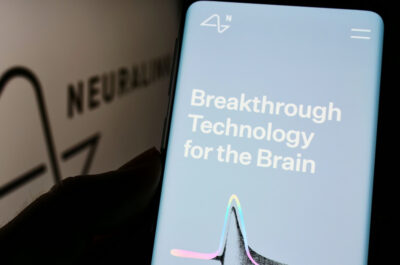If there’s one area where we can really see tracking taking off, it’s medical and lifestyle. We deliberately combine both as the boundaries are increasingly blurry: Whereas medical emcompasses all things health-related, by lifestyle we mean to include the kind of active lifestyle that the fitness & sports industries portrait.
There’s hardly a week where no new service or app is launched, or a new self-tracking hardware shipped.
That’s not surprising in itself. After all, in the medical sphere tracking body data has always been a tool of the trade. Tell a diabetic about your fascination with body tracking and they’ll give you an odd look, after all they’ve been doing it for years. What is fascinating, though, is how QS applications have been moving towards the mainstream. Step by step, these services have become easier to use, slicker, better designed. In other words, they’ve started to make it fun to track your body.
Feedback loops, self optimization and peer pressure
The basic idea of the Quantified Self in health and fitness is obvious: Only if you know how you’ve been doing, you can really improve yourself. In other words, you need to look at data over time to see your progress. So if you keep a regular record of how fast and how long you run, you will eventually get to a point where you see the curve going up or down – in other words, where you become fitter or lazy, you see regularities and irregularities, and potentially you see patterns. For example, you might discover that you perform much better in the morning than in the evening, and could plan your workouts accordingly.
We know that feedback loops work: This principle has similarly been used in most nutritional treatments for a long time, from the blood sugar testers diabetics use to the point system of the Weight Watchers.
Tracking yourself is only part of the deal. It becomes much more magic once you share your data, either with your trusted peers or with the world. This opens up a whole treasure trove of new possibilities: Aggregated, anonymous data might be used for research, or to show fancy statistics like average fitness per city. More targeted, private sharing with your friends can provide encouragement to stick to your ambitious routine even when it’s cold and rainy outside. Never underestimate the power of peer pressure!
The autonomous patient
There is a mega trend at work here that makes all of this particularly relevant to the medical sector: Patients are becoming more autonomous, driven by three factors.
One, thanks to Google patients have more access to medical information than ever before.
Two, spending cuts on government programs for social and health care increase the pressure for their citizens to take better care of their own health.
Three, we now have the technology to do this. Sensors are becoming so cheap and ubiquitous that it’s simple and cheap to track your fitness, making it more attractive for those who are motivated to improve themselves.
Today, we have more control over our body’s fitness than ever before, and now we have the data to prove it. The Quantified Self is a manifestation of the empowered user/citizen/patient.
And let’s not forget: From an economic standpoint, the global health and fitness market is gigantic. Numbers differ vastly depending on which aspect you look at, but in many countries we’re talking billions, and the boundaries between medical and fitness/lifestyle are blurry.
Calories, scales and workouts
The pure size of the market surely is one of the reasons why so many different players are gathering here, from sportswear producers (Nike+) to medical suppliers and gadget producers (Jawbone) to telcos (T Mobile, AT&T) and web startups (Massive Health, Runkeeper).
The mere range of devices and services already out there is mind boggling. From scales to food tracking apps to all kinds of fitness & workout trackers to sleep trackers and combinations of any of these, there’s hardly any activity that’s untrackable. And not all these services are geeky and require carrying around odd hardware. For Nintendo’s popular video game console, the Wii, you can get the Wii Fit game that wraps your home workout into a game. The Jawbone Up comes in the shape of a quite neat wrist band.
However, not all body trackers are created equal. There are tremendous differences, and let the rapidly growing number of tools not deceive you. This is an emerging field, and it’ll keep exploding for awhile before consolidation kicks in and we’ll truly be able separate the wheat from the chaff.
How are the apps different
Some of the axes of differentiation are becoming clear:
- Stand-alone apps vs integrated systems consisting of hardware and networked software
- Explicit vs implicit trackers: Do you have to input data by hand or is it collected automatically?
- More open vs more closed systems: Can you move your data in and out of the service, or hook it up to other services?
Runkeeper: One service to keems them all
It’s too early to tell, but if we should wager on one killer service that will come out on top of the market, it would be Runkeeper. What started as a relatively simple Android app to track your running and share it online has since grown into a massive platform that aggregates all kinds of data, and provides an API for third party developers to build apps on top of that platform.
Runkeeper confidently calls this powerful database their Health Graph, and currently it allows access to a wide range of data points like sleep, strength training, diabetes, nutrition, overall health and activities.
The up-and-coming
There are a few other hot candidates for the upcoming months.
Massive Health is the brainchild of interaction designer and former Creative Lead for Firefox Aza Raskin. With a designer as co-founder it’s no wonder that the company brings a design twist to health. Their first of a series of apps is The Eatery, a nutrition analysis tool: snap photo of meal, learn about health implications. It’s far from perfect, but if it keeps evolving it will provide an easy, fun way of learning more about the way you eat, and of making better-informed nutritional choices – a feedback loop.
With their new Up, Jawbone (otherwise better known for bluetooth headsets) explores new territory. Their stylish wristband is equipped with motion sensors that track movement and sleep. The wristband also serves as an activity reminder that vibrates if you sit still for too long in front of your computer. The data is analyzed online, and the app shares feedback of all sorts through an app on your iPhone. Additionally, the app also allows you to snap photos of your meals, and the Up will run image analysis to give you better information about your meals. Add some social gaming group dynamics, and you have what promises to be a pretty well-rounded offer – and potentially a way out of the dilemma of having to carry around a whole set of smaller gadgets to capture different kinds of data.
What’s next?
For a while, we’re going to keep seeing the medical and fitness sector advancing the Quantified Self. They’re the obvious candidates to be trailblazers and innovators: They have the financial backing of a big, only partially tapped market. They offer strong incentives, namely self-improvement, health and fitness. And they come equipped with the right skills, sensors, and experience in tracking body data. Eventually, self-tracking will become ever easier and thereby more mainstream. Nike+, Runkeeper and the Up give us a glimpse of the things to come.
Until then we can only encourage you to experiment. Get a scale, an app, or some sensors and start tracking away. It’s good fun and you’ll learn something about yourself.
Dieser Artikel ist zuerst erschienen auf thirdwaveberlin.com
Artikel per E-Mail verschicken
Schlagwörter: body tracking, fitness, health, medical, Quantified Self




4 comments
thanks for posting, this web is also about lifestyle http://www.aidatour.co.id